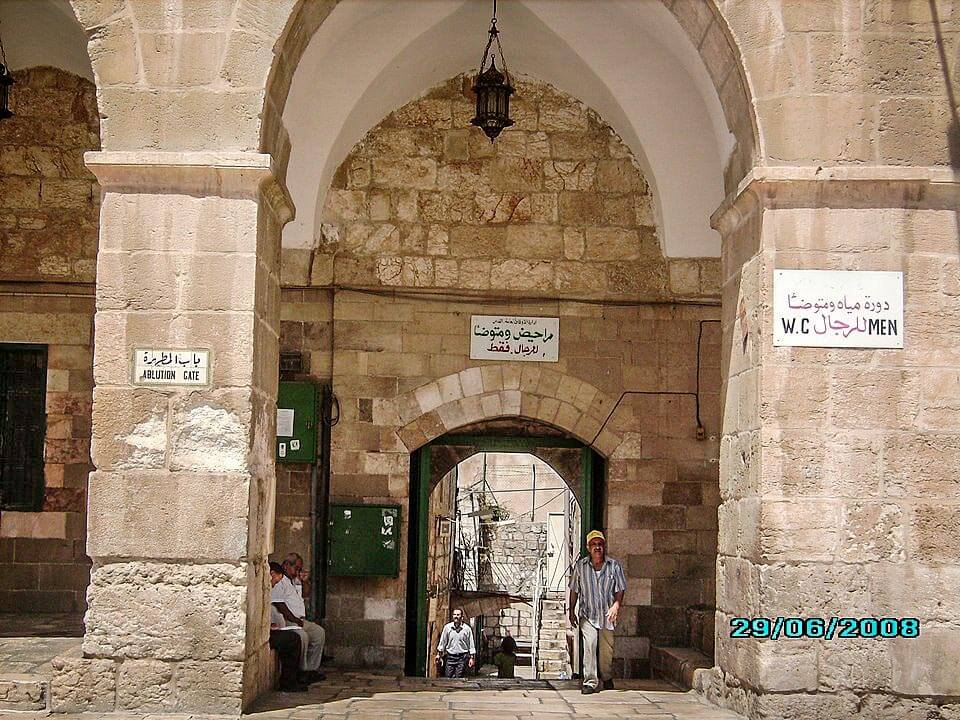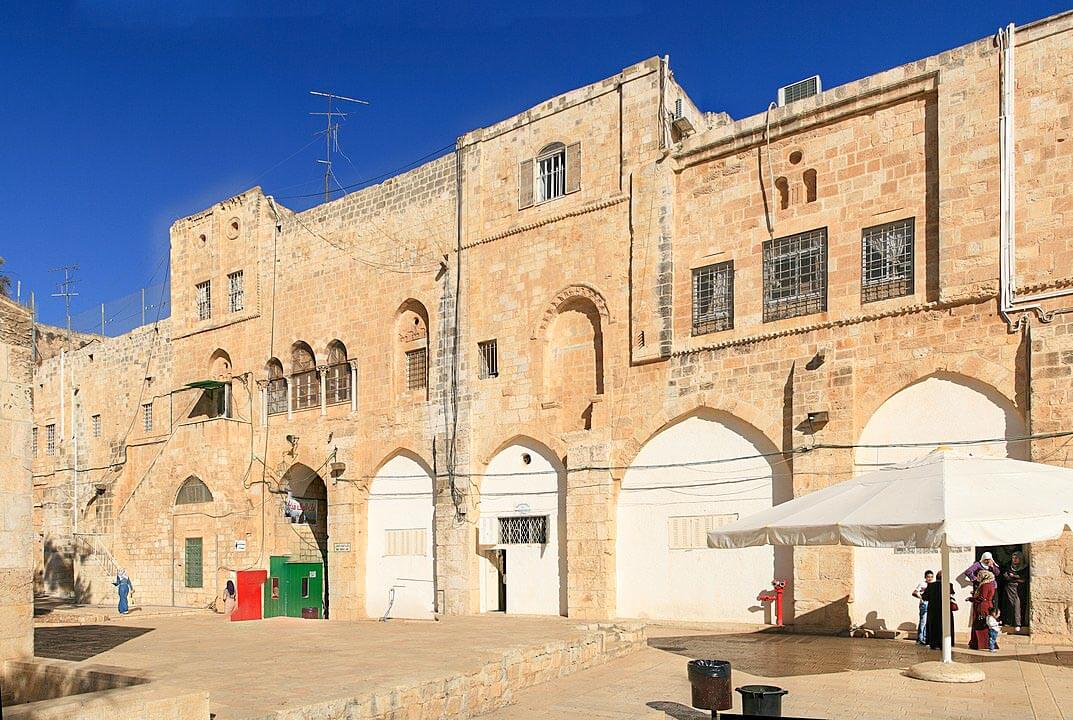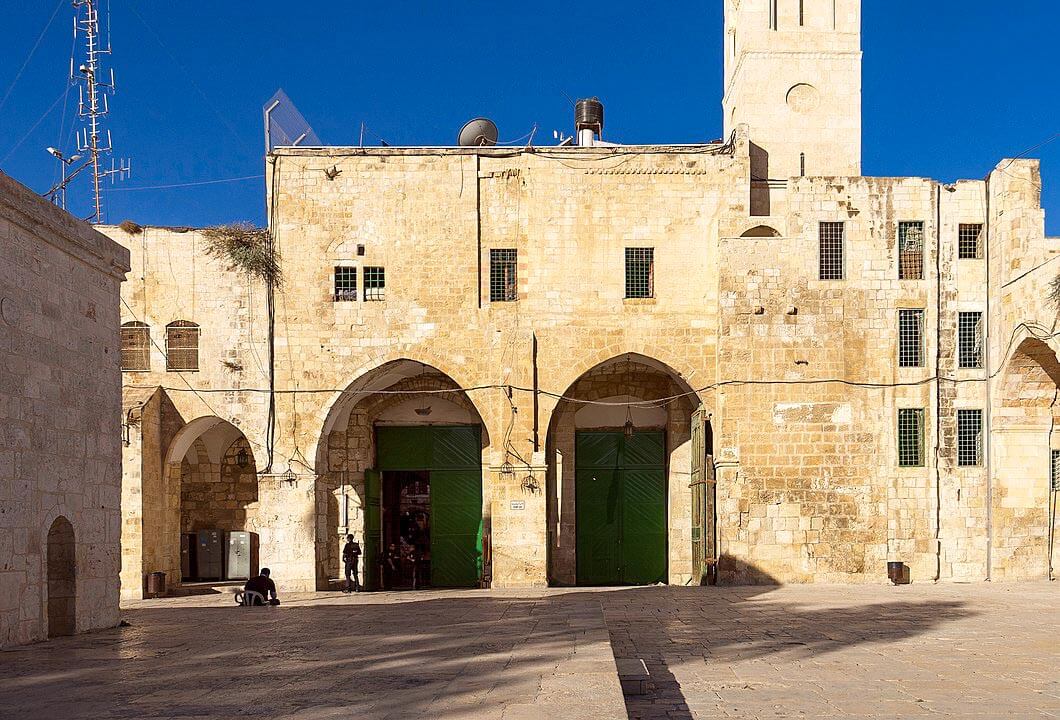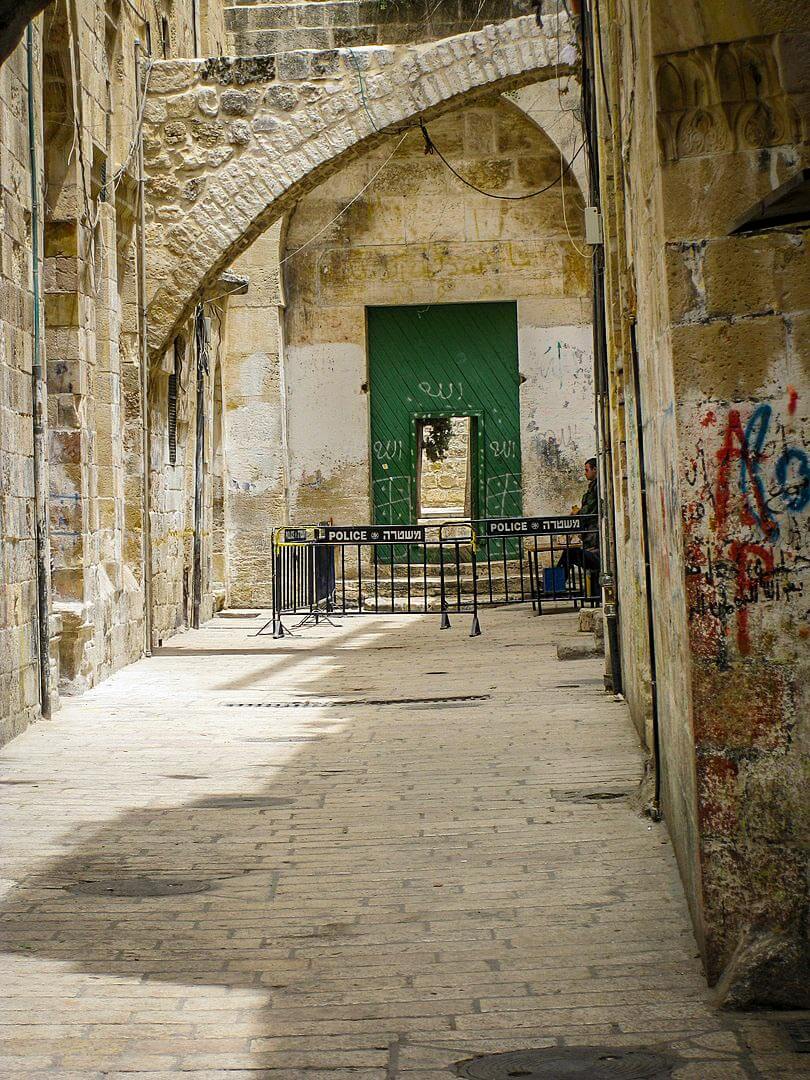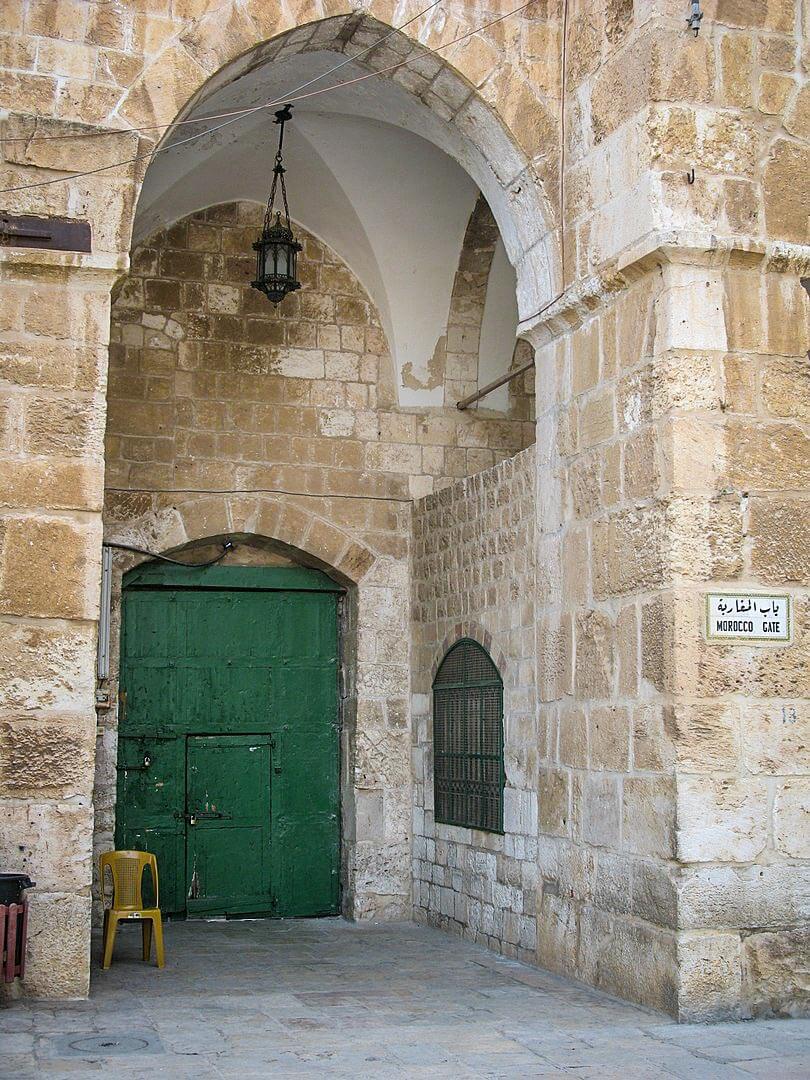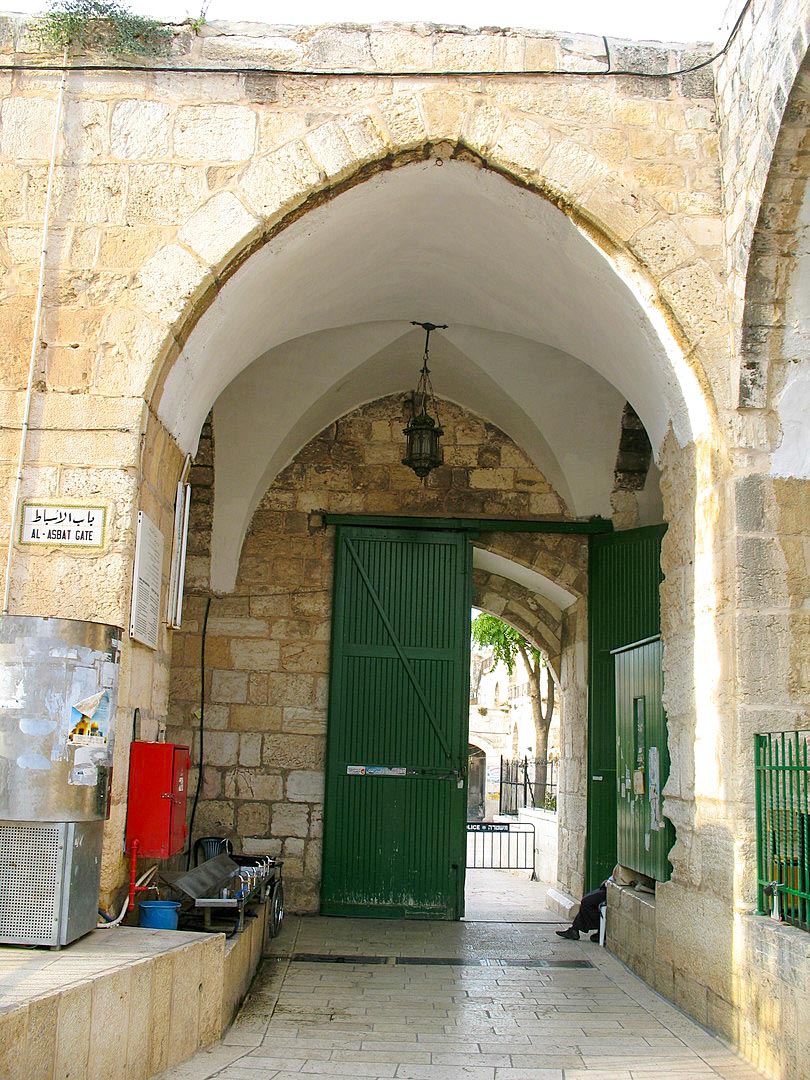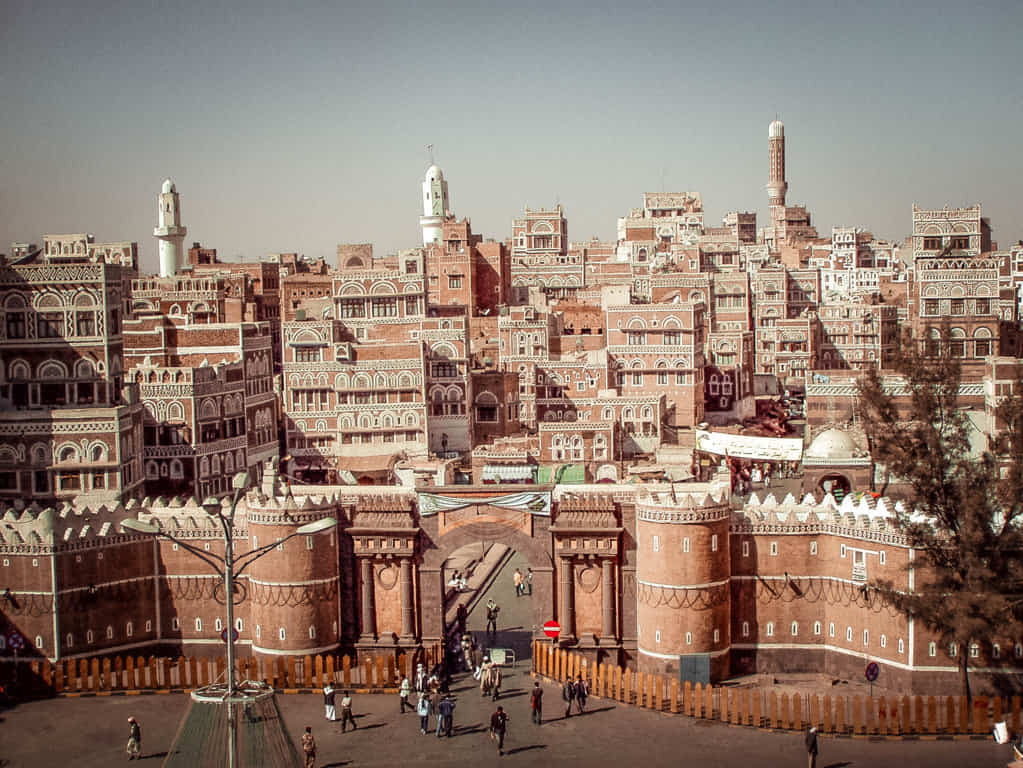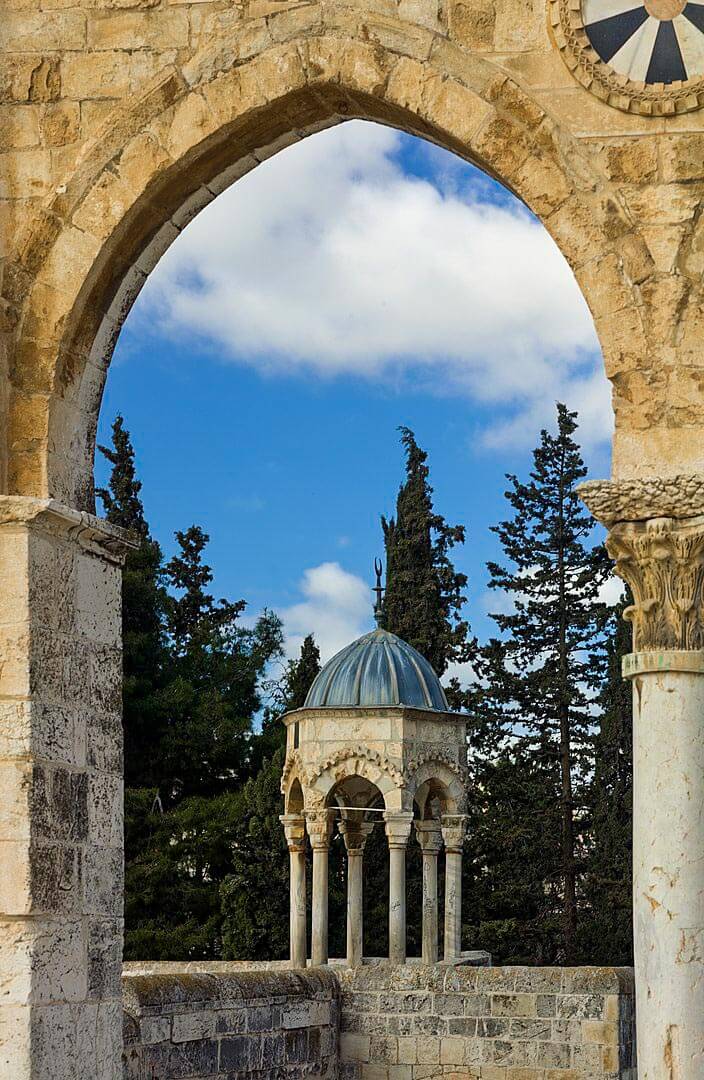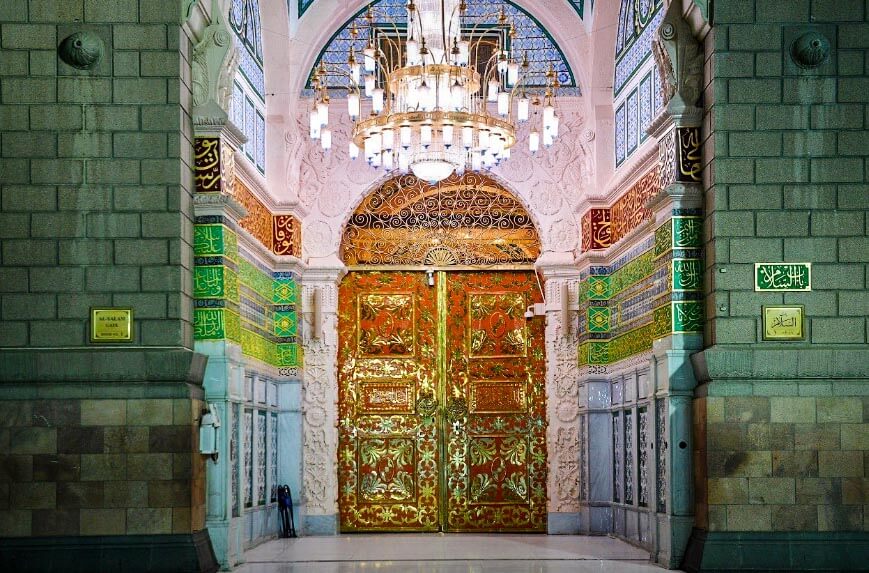Jerusalem, Palestine
Ablution Gate
Cotton Merchant’s Gate
Gate of Bani Ghanim
Gate of Darkness
Gate of Forgiveness
Gate of the Chain (Bab al-Silsila )
Gate of the Inspector
Iron Gate
Morocco Gate
Tribes Gate (Bab al Asbat)
Ablution Gate (Bab al Mutahara)
The Bab al-Mutahara is situated a few meters to the south of Bab ul-Qattanin. This gate is located in the western corridor of Masjid al-Aqsa complex near the Cotton Merchants’ Gate which is close to the Dome of the Rock. It is the only gate of al-Aqsa that does not lead to one of the Old City’s quarters, but to an ablution area built by the Ayoubi Sultan al-Adel Abu Bakr Ayoub instead.
Cotton Merchant’s Gate (Bab al-Qattanin)
Built by the Mamluk sultan Muhammad bin Qaloun in 737H/1336CE in the Western boundary of Masjid al Aqsa, between Bab al Hadid and Bab al Matarah. The gate leads into the Cotton Market of the al Quds Old City, and hence its name. This gate is considered to be one of al-Aqsa Mosque’s most beautiful gates with decorations of Islamic motif and stalactites covering its entrance.
Iron Gate (Bab ul-Hadid)
Bab ul-Hadid is located directly underneath the building known as Madarasa al-Uthmani. It is located on the western side, at the end of Bab al-Hadid Street, being within the Muslim Quarter. It is also called Aragun’s Gate after its renovator and founder of the Araguniyah School Prince Aragun al-Kamili.
Gate of the Inspector (Bab An Nadhir)
Bab al-Naazir is located on the western flank of Haram al-Sharif. The Inspector’s Gate is located in Al-Aqsa Mosque’s western corridor to the south of Bani Ghanim’s Gate. It is a large gate with a 4.5m high entrance. It is named after the Inspector of Masjid al Aqsa and the Ibrahimi Masjid, who used to reside nearby during the Mamluk era.
Ghawanima Gate
Gate of Bani Ghanim, as seen from within the Haram al-Sharif (Temple Mount). The Gate is located in the northwest part of al-Aqsa Mosque and was last renovated in 1308 CE (707 Hj.).It is relatively small and is named after the Banu Ghanim quarter of the Old City of al Quds it leads into.It was previously called the al Khalil gate. It was burnt by an Israeli extremist in 1419H/1998CE.
Gate of Forgiveness (Bab al-Huttah)
The Gate of Remission is one of the oldest gates inside Masjid al-Aqsa; it is located in the Mosque’s northern corridor between the Gate of the Tribes and the Gate of Darkness.
The accurate year in which the gate was built remains unknown; however, it was renovated during the Ayyubid and Ottoman eras. This gate leads to the as-Sadiyah Quarter in the Old City, and it is one of three doors in al-Aqsa the Israeli Security Forces allow to remain open for the Dawn, Maghrib, and Isha prayers.
The Moroccan Gate (Bab al Magharibah)
The Moroccan Gate is located in Masjid al-Aqsa western wall (al-Buraq Wall). It was last renovated in 1313 CE (713 Hj). The gate leads to the Moroccan Quarter that was demolished by the Israeli Occupation Forces in 1967 to build the Wailing Wall Plaza in order to create a larger space for Jews to pray in front of Al-Buraq Wall, and to the left is Madarasa al-Fakhar.
Gate of the Chain (Bab al-Silsila )
The Chain Gate is located on the western flank. One of the main entrances to Masjid al Aqsa, built during the Ayoubi era. It has a double wooden door with a small opening that allows a single person to pass through when the double door is closed.
Gate of Darkness (Bab al-Atim)
The Gate of Darkness is one of the three gates located on the north side. It is traditionally known as Gate of al-Dawadariya. More recently it is also known as King Faisal Gate. It is located close to the al-Dawadariya School. It was renovated in 1213CE by the Ayoubi King Moatham Sharf Ad Din Issa. It is the first entrance along the northern wall of Masjid al Aqsa.
Tribes Gate (Bab al Asbat)
The Gate of the Tribes is located at the north-eastern corner of the Temple Mount. The Tribes Gate was built in 1213 CE (610 Hj.), and is about four meters high arched gate located on the Northeast side of the al-Aqsa Mosque. It was renovated several times; however, the current door was renovated by the Ottoman Sultan Suleiman the Magnificent. This gate is also called “Virgin Mary’s Gate” because of its close location to Saint Hannah Church where Christians believe Virgin Mary was born.



